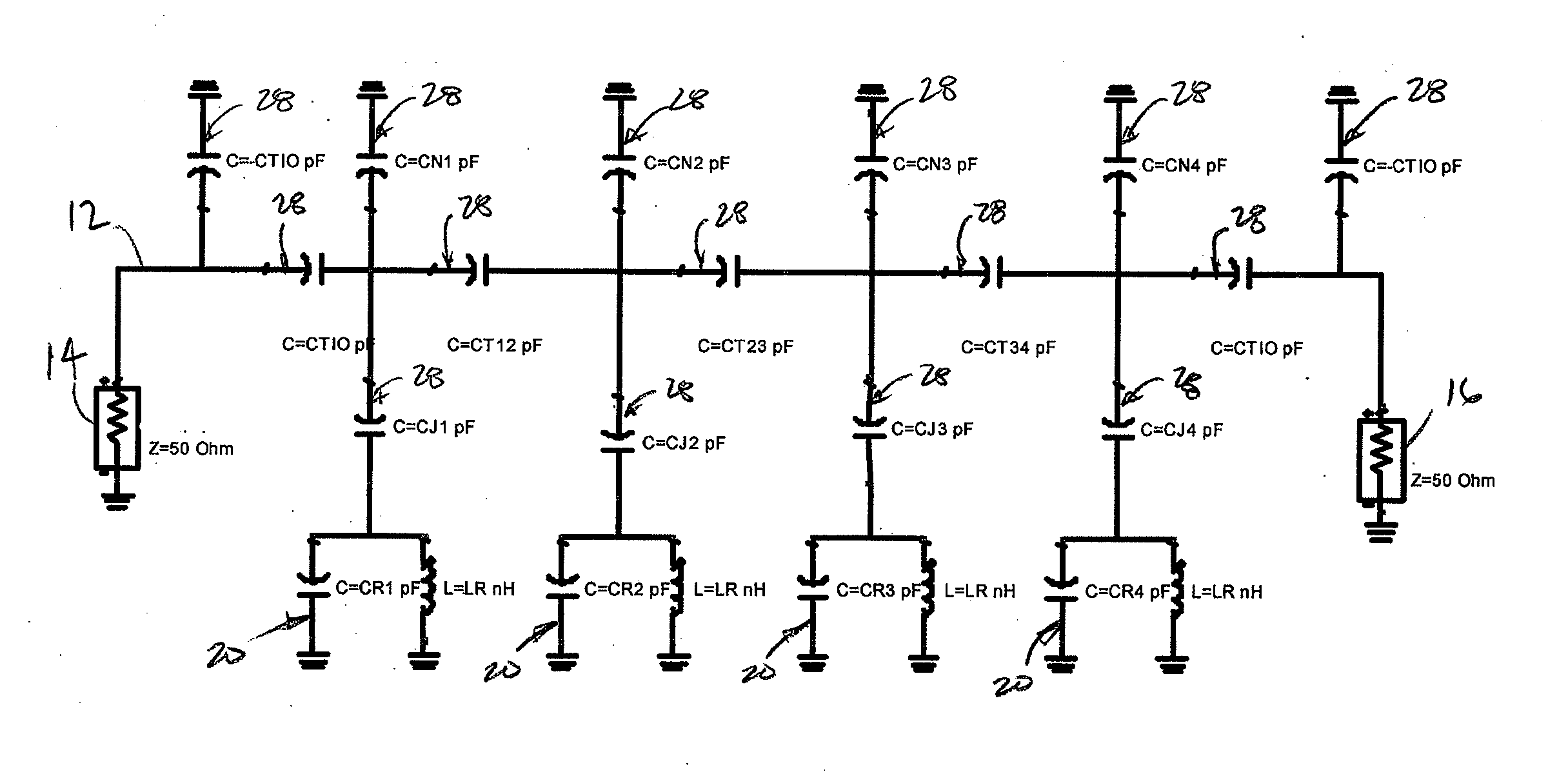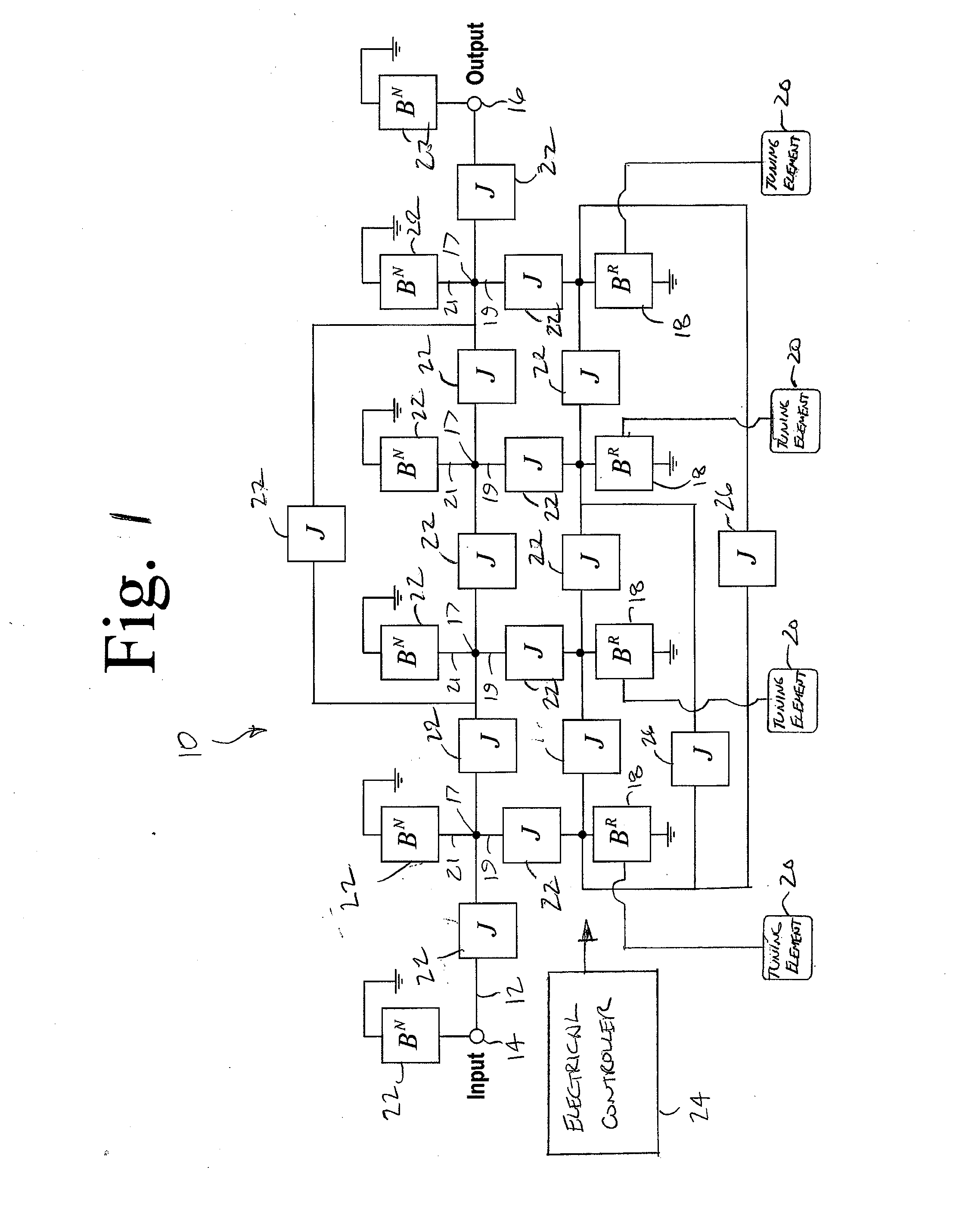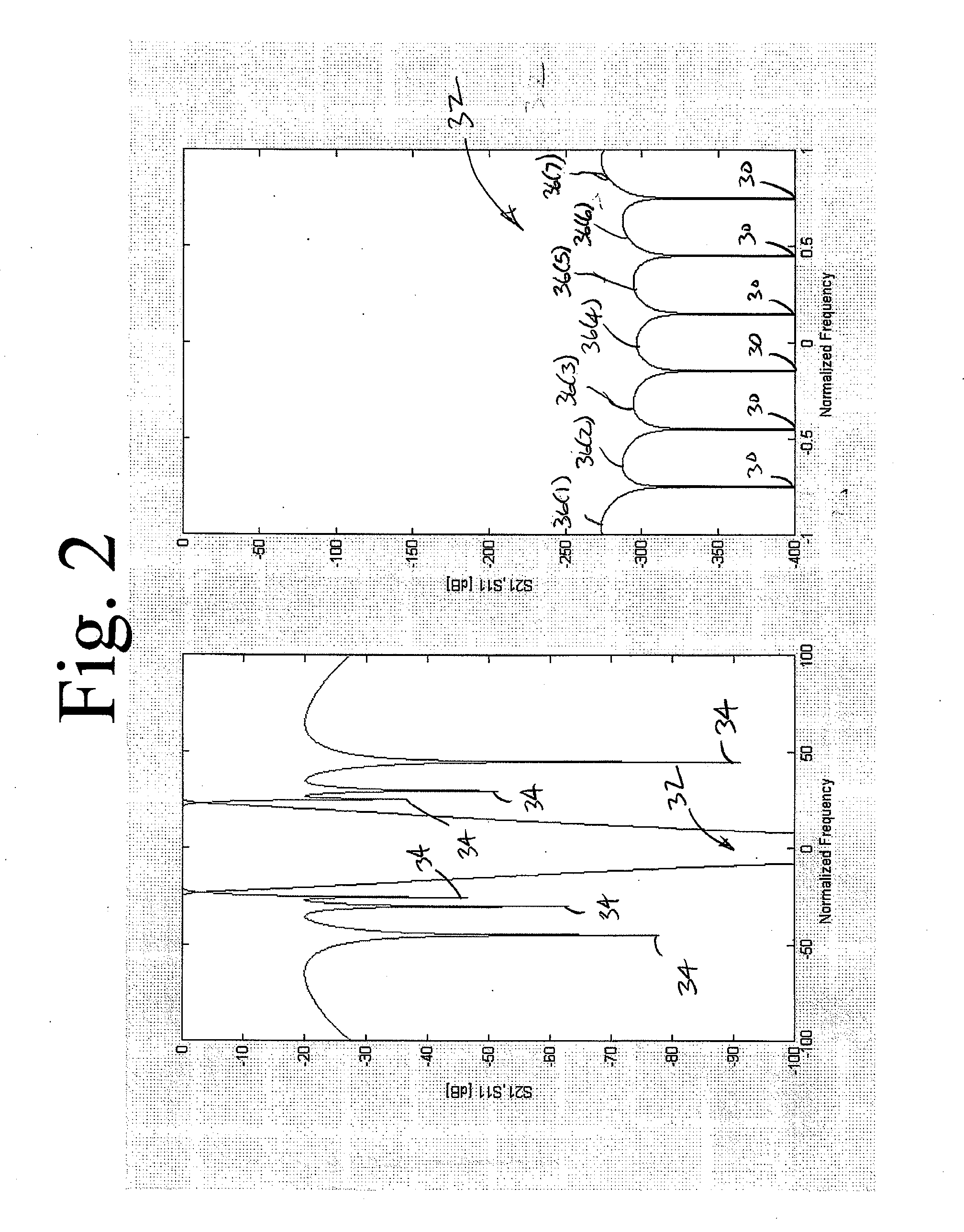Low-loss tunable radio frequency filter
a radio frequency filter and low-loss technology, applied in the field of microwave circuits, can solve the problems of increasing the insertion loss of the filter, driving the size and cost of the resonator for a given, and corresponding compromise in filter steepness or selectivity, so as to minimize the insertion loss of the rf filter
- Summary
- Abstract
- Description
- Claims
- Application Information
AI Technical Summary
Benefits of technology
Problems solved by technology
Method used
Image
Examples
Embodiment Construction
[0042] Referring to FIG. 1, a tunable radio frequency (RF) filter 10 constructed in accordance with the present inventions will now be described. In the illustrated embodiment, the RF filter 10 is a band-pass filter having pass band tunable within a desired frequency range, e.g., 800-900 MHz or 1,800-2,220 MHz. In a typical scenario, the RF filter 10 is placed within the front-end of a receiver (not shown) behind a wide pass band filter that rejects the energy outside of the desired frequency range. The RF filter 10 generally comprises a signal transmission path 12 having an input 14 and an output 16, a plurality of nodes 17 disposed along the signal transmission path 12, a plurality of resonant branches 19 respectively extending from the nodes 17, and a plurality of non-resonant branches 21 respectively extending from the nodes 17. The RF filter 10 further comprises a plurality of resonant elements 18 (in this case, four) between the input 14 and output 16, and in particular couple...
PUM
 Login to View More
Login to View More Abstract
Description
Claims
Application Information
 Login to View More
Login to View More - R&D
- Intellectual Property
- Life Sciences
- Materials
- Tech Scout
- Unparalleled Data Quality
- Higher Quality Content
- 60% Fewer Hallucinations
Browse by: Latest US Patents, China's latest patents, Technical Efficacy Thesaurus, Application Domain, Technology Topic, Popular Technical Reports.
© 2025 PatSnap. All rights reserved.Legal|Privacy policy|Modern Slavery Act Transparency Statement|Sitemap|About US| Contact US: help@patsnap.com



